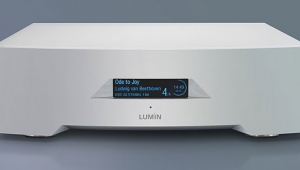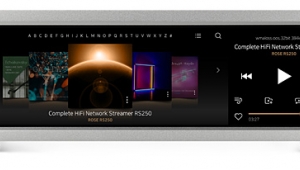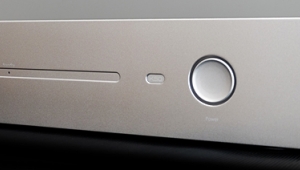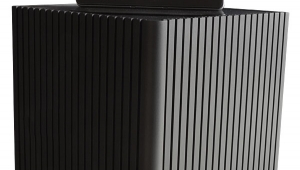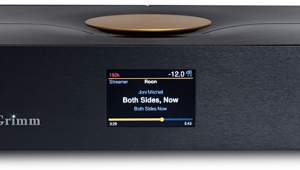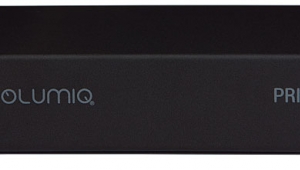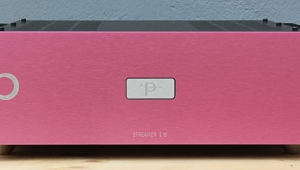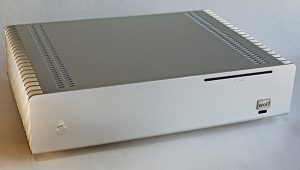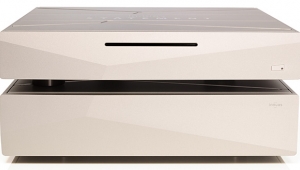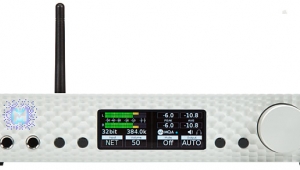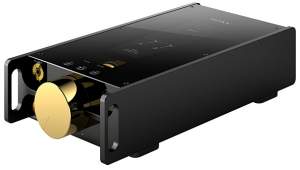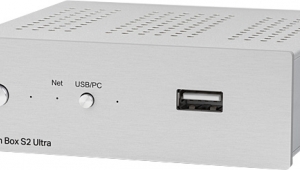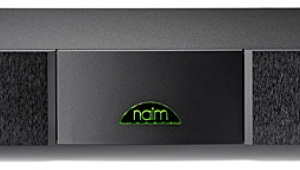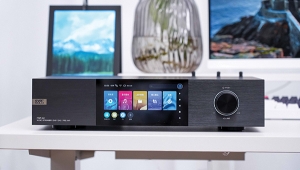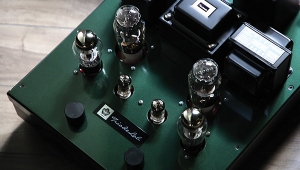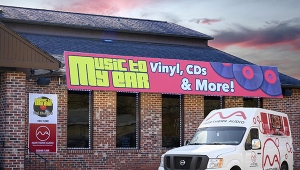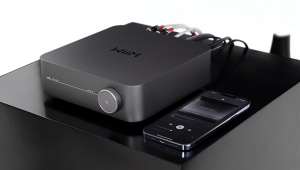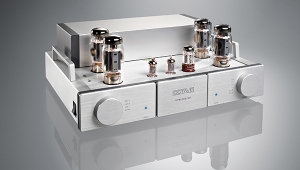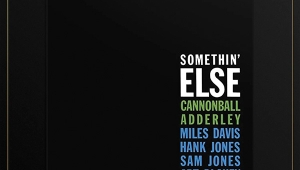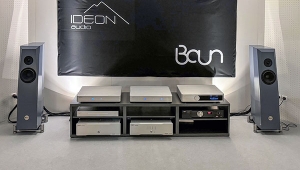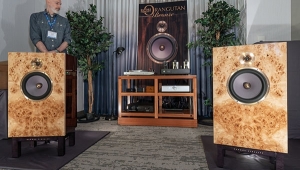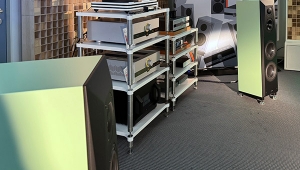| Columns Retired Columns & Blogs |
Antipodes Oladra server/streamer/reclocker
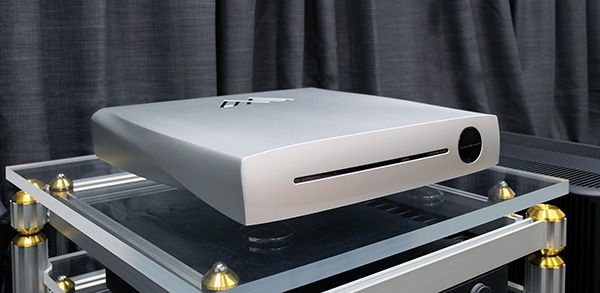
Servers, servers, servers. How we who embrace digital hi-fi love them for their potential to make files and streams sound better (more alive, vital, streams sound better (more alive, vital, musical, moving, transparent) than music served from a computer. How we curse them when we experience the limitations of their software. How we despair when, shortly after ascending to Peak Digital Mastery, we download a software update that hurls us back into the Valley of Digital Unknowns.
Footnote 1: Of course, it's also true that much recorded music is only available on vinyl.
Having just written that, I'm picturing scores of vinyl lovers laughing smugly as they read about such server woes and reach for another record. (They, of course, have their own issues to deal with: dirty vinyl, azimuth and zenith error, and so on.) But we who embrace file playback regardless of its technical complexities know the potential it has to deliver glorious sound and virtually limitless, near-instantaneous music choice including access to music available in no other format (footnote 1). Plus, we know we can hit Play from the comfort of our seats without the need to rise, clean, align, and queue. Unless, that is, we need to reboot.
I've climbed then slid down multiple hi-fi peaks as I've moved from computer to a Roon-equipped NUC, Roon Nucleus+, and Innuos Statement Next-Gen music servers. Along the way I've reviewed the original Innuos Statement from Portugal and the Antipodes Audio K50 from New Zealand. Now I'm exploring Antipodes's top-of-the-line server/streamer/reclocker, the Oladra ($25,000), which is designed for precise clocking, low noise, and high bandwidth.
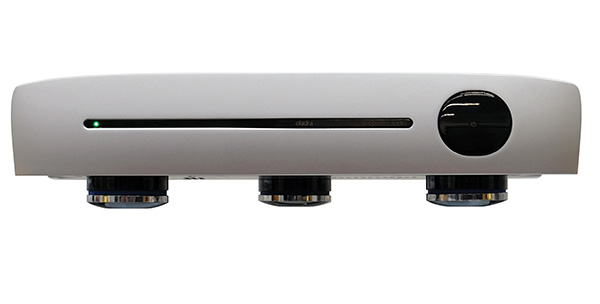
What's in a name?
I interviewed Antipodes founder Mark Jenkins once before, for my review of the K50, which was published in the September 2021 issue of Stereophile, but I didn't ask him then about the company's name. This time, I did. Jenkins explained that in 2004, when he was still on the senior management team of Telecom New Zealand and he and his wife, Sonia, were starting up an audio-cable enterprise, they weren't sure whether they would stay in New Zealand or move to Australia, so they wanted a name with a flavor that would work in either country. "New Zealand and Australia share very little in local culture, sayings, or other vernacular," he said. "But both were heavily colonized by the British, who refer to Australia and New Zealand collectively as the Antipodes, as in the other end of the world.
"'Oladra' is derived from a relatively obscure Greek word meaning mavericks, outlaws, renegades, etc.," Jenkins said. "The Greeks pronounce it more like Olatra. I have a habit of naming our development projects, and the maverick idea of figuring how to make switch-mode power supplies work in a music server gave rise to the project name: Oladra. That project was the largest single development project in our history, running from 2016 to 2022, and is still evolving a little in 2023.
"When we pondered naming our premium model, we thought about all the overused words in the industry (Signature, Reference, Ultimate, Extreme, etc.) and decided to launch it under a product name that could always represent our top model. Because we already used 'Oladra' to describe the unique way we do things now, we trademarked the name for use into the future. We now have a corporation named Oladra Limited, registered in New Zealand, and we own oladra.com." (There's no website there at present.)
The Antipodes core philosophy
Welcome to the detail-focused mind of Antipodes CEO Mark Jenkins. Even before he stopped making cables—"because there's too much bullshit in the cable business"—Jenkins began designing servers. In the longest interview I've ever conducted with a manufacturer (in terms of both distance and time) and in several email exchanges, he explained what makes the Oladra and his company unique.
"If you want to use a shitty computer" as a music server, "then buy it," Jenkins declared at one point. "Our servers sound better because we have a better design with better materials that cost more."
When developing a new server, Jenkins begins by thinking about what Antipodes can do better. After his engineers translate theories into a prototype, he and two other experienced listeners, each of whom approaches listening in a different way, evaluate what they hear. "The one thing that is consistent between us is what is most important: how the music makes us feel," Jenkins said. "Our ethos is about the music, not the technology. If it feels right—if I feel the emotion in the music—it is right."
To that end, timing is paramount. "It is very easy to feed ones and zeroes to your DAC in the right order," he said. "Any computer can do that. What is surprisingly difficult is to send those ones and zeros with perfect timing to the DAC. We see it as ideally requiring four steps. The first step runs a server app, the second step runs a player app, the third step clocks the signal before it goes to the DAC, and the last step involves reclocking in the DAC.
"Our top models, the Oladra and K50, house three separate customized processing engines, one for each step. This contrasts with the more common approach, which uses a basic single computer with specialist I/O cards to improve the digital signal going to the DAC.
"No circuit yields a perfect result, so there will always be timing errors to some degree in what arrives at the DAC. Unfortunately, timing errors in digital audio sources cause an audible error in the signal the DAC produces. The resultant distortion is more egregious to the ears than the typical distortions that occur with analog audio sources. For that reason, in order to convey the music, the 'perfection bar' is set higher for digital audio circuits than for analog audio circuits."
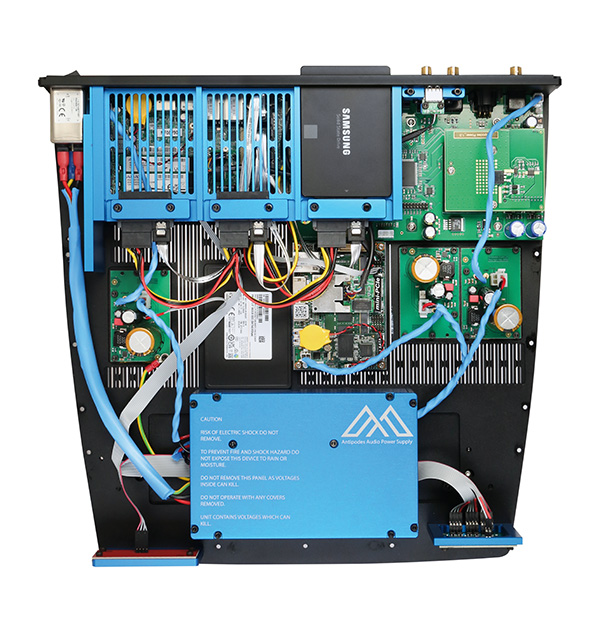
Squaring the wave
Jenkins says that Antipodes processing engines are tuned at chip level to manage noise and maximize digital-signal bandwidth. That's because generating precise squarewaves requires a very wide bandwidth, and trying to fix noise after the event reduces bandwidth. "Antipodes believes that representing a squarewave requires high bandwidth to square out the wave for at least seven or more harmonics above the bitrate," Jenkins wrote in an email. "Otherwise, the squarewave will be less square and less precise in representing the timing."
What about filtering out high-frequency noise? Jenkins says, reasonably, that filters add a rise time and a fall time to the squarewave, reducing the precision of signal transmission timing. "To produce a clean squarewave, you need to both reduce noise and almost instantaneously move from 0 to 1," he said. There's one more thing you need to achieve that: a fast power supply. "The last thing you want in digital audio is a slow power supply.
"When you design, there's a bit of a trade-off between getting the noise low and the bandwidth high. Both linear power supplies and filters slow things down, smearing subtle timing cues and imbuing music with a mechanical/electronic quality.
"Six years ago, we began trying to make the fastest possible power supplies. By 2022, we had found how to take linear power supplies completely out of the picture and not have a noise penalty. Our new design choices eliminate the flux leakage from the large transformers used in linear power supplies and provide much faster current delivery, resulting in a big improvement in sound quality."
Jenkins calls their power supply "triple-cascade switch-mode" because it involves three regulation stages that feed each other in series. Each stage uses a different topology, the stages are isolated from each other, and the transformers are much smaller than those in linear supplies.
Software
The Antipodes Oladra offers a Chinese "family dinner" choice of software options. Nearly 80% of users opt for subscription service Roon; the Oladra can serve as the Roon Core. Once you adjust a few settings, Roon's seamless interface, library management, streaming service integration, cross-references, access to liner notes, and ease of use are self-recommending. Roon's software is not perfect, especially when it comes to searching and correctly cataloguing multi-CD sets, but its visual interface is information-rich, and its many options make it extremely practical and user-friendly.
Roon provides a server and a player, but Roon's server can be used with a separate player. According to Jenkins, an increasing number of Antipodes users are combining Roon with SqueezePlayer or HQPlayer. Others choose an all-Squeeze solution or MPD (footnote 2) with MinimServer. Other server options include MiniDLNA, Plex, and Sonus Server.
Antipodes offers a software alternative to Roon, one I explored at length. Calling it Antipodes's "own" software, though, can be misleading. "We do and we don't have our own software," Jenkins said in response to a query. Antipodes's server is "Squeeze," a customized version of the Logitech Media Server. "I'll be first to admit that compared to Roon, we have work to do."
So, why doesn't everybody just use Roon? On the server side, not everybody wants to pay the monthly fee. And what about players? "The different player apps have an impact on sound quality," Jenkins told me. "Squeeze sounds lighter and faster than Roon, and HQPlayer sits somewhere between them. But it's very system dependent. Many who prefer the sound of Squeeze use Roon with Squeeze to keep using the superior Roon interface. Some use Roon with HQPlayer to access the DSP features HQPlayer offers."
Like so many audio products these days, Antipodes servers are not so much appliances with fixed functionality as platforms that allow for future expansion. "There is an increasing level of interest in Antipodes offering its own playback solution that includes making powerful DSP functionality," Jenkins said. "But that would only address the user interface layer. Instead, we are developing a new full stack, which integrates the player user interface, the user management interface, the orchestration layer, the operating system, and the firmware. We have two objectives: sound quality and ease of use. We plan to deliver a simplified version later this year, and the complete version in 2024."
Behind the front lie outputs and options galore
The only indicators on the Oladra's slender, clean-looking, attractive front are two small LEDs: a bright green one for On, and a softer-lit amber LED that indicates when the Oladra is on standby. Both blink during the minute-long On/Off sequence (footnote 3), which is triggered by a large button on the front panel.
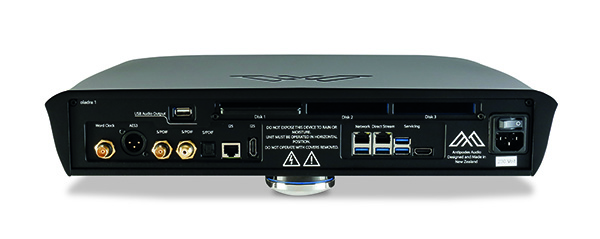
The Oladra's nicely laid-out rear panel hosts its inputs, multiple outputs, three SSD slots for internal file storage, the main power switch, the IEC inlet, and almost everything else. You can add up to 24TB of internal storage—Antipodes recommends Samsung PM893 cards—by sliding up to three cards into the storage slots until they click into place. The Oladra can, of course, access files stored remotely on a NAS and stream music from Qobuz, Tidal, and other streaming services.
Footnote 1: Of course, it's also true that much recorded music is only available on vinyl.
Footnote 2: HQPlayer is a music player best known for its sophisticated upsampling options. MPD is Music Player Daemon, a free, open-source music player often used by computer experts and enthusiasts.
Footnote 3: It takes about a minute to turn the unit on, another minute to turn it off.
- Log in or register to post comments


